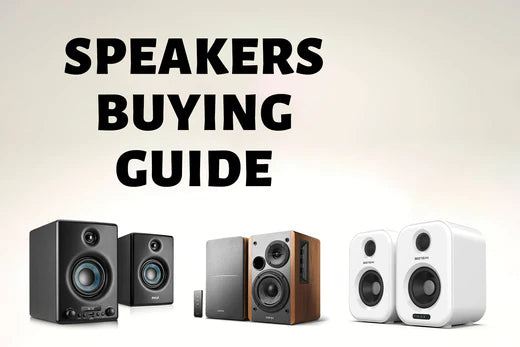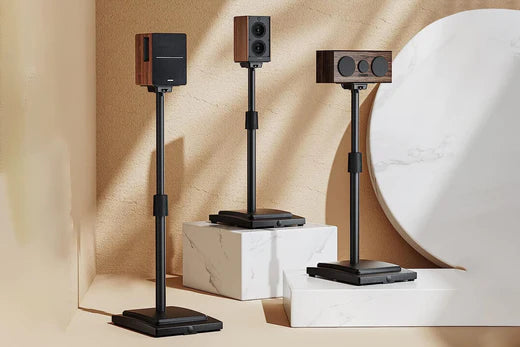🎶 Introduction | Why Room Acoustics Matter More Than You Think
You’ve got the perfect turntable, a solid set of speakers, and your favorite vinyl ready to spin. But something’s not quite right. The highs are sharp, the bass feels muddy, and the soundstage just doesn’t feel “real.”
Before blaming your equipment, take a look at your environment.
The truth is, your home listening experience depends as much on your room as on your gear.
Sound waves don’t just stop at your speakers—they bounce off walls, floors, ceilings, furniture, and even windows. This reflection can make a $1,000 setup sound worse than a $300 one.
In this guide, we’ll share practical, real-world vinyl setup acoustics advice—based on sound physics and what the community on r/audiophile (Reddit) has learned through years of trial and error. (source: Reddit, r/audiophile, 2024)
And the best part? You don’t need to rebuild your room or spend a fortune.
Let’s get your space sounding the way your records deserve.
H2-1️⃣ Understanding How Room Acoustics Shape Your Sound
Every room has a sonic fingerprint. Its shape, size, and surface materials determine how sound behaves.
Here’s the basic science:
- Reflections: Hard surfaces (glass, concrete, wood) bounce sound, creating echoes or a “harsh” tone.
- Absorption: Soft materials (curtains, rugs, couches) soak up sound, reducing sharpness.
- Diffusion: Uneven surfaces scatter sound, creating a more natural soundstage.
In small rooms—where most vinyl setups live—reflections dominate. This causes “standing waves,” making certain frequencies louder or weaker depending on where you sit.
Reddit insight: One r/vinyl user described how adding a $40 rug and two wall panels did more for their sound than upgrading their cartridge.
👉 Lesson: Good acoustics aren’t just for studios—they’re for every living room.
H2-2️⃣ Start with Positioning: The Foundation of Great Sound
Before adding panels or bass traps, get your layout right. The way you position your speakers and listening chair has the single biggest impact on sound quality.
Follow the “Golden Triangle” rule:
- Speakers and listening spot form an equilateral triangle.
- Tweeters (high-frequency drivers) should be at ear level.
- Keep speakers at least 12–24 inches from the back wall.
Pro tip: Avoid placing speakers directly in corners—bass frequencies will build up, creating a boomy or muddy effect.
For turntables, make sure your player is:
- Away from direct speaker vibration.
- On a stable, isolated surface (Audio Keeper isolation platforms are ideal for this).
- Level—uneven surfaces can affect stylus tracking.
The right geometry gives your vinyl setup acoustics the room to breathe.
H2-3️⃣ Control Reflections: Soft Surfaces Are Your Friend
If your space sounds echoey or “metallic,” you’re hearing early reflections. These bounce from walls, floors, and windows and distort your soundstage.
Easy, affordable fixes:
- Rugs: A thick area rug between you and your speakers reduces floor reflections.
- Curtains: Use heavy fabric on windows—velvet or linen blends work great.
- Bookshelves: A full bookshelf acts as a natural diffuser, scattering reflections across different frequencies.
If you want to get fancy, acoustic foam or wood diffusers behind your speakers can fine-tune your sound—but even without them, simple décor changes can transform your home listening experience.
H2-4️⃣ Taming the Bass: Simple Low-Frequency Control Tips
Bass is often the hardest thing to get right. Too little, and your music sounds thin. Too much, and everything turns to mud.
Here’s how to fix it:
- Keep speakers away from corners—low frequencies build up there.
- Add bass traps or even rolled-up towels in corners (temporary DIY trick).
- Try moving your listening chair a foot forward or backward—small changes often balance the bass dramatically.
Community insight:
A user on r/audiophile shared that shifting their sofa just 18 inches fixed an annoying 60Hz resonance. No money spent—just physics understood.
This is the essence of audio room optimization: it’s about understanding how your space behaves.
H2-5️⃣ Smart Furniture and Decor Choices for Better Acoustics
Your furniture layout can either enhance or ruin your listening experience.
Avoid:
- Glass tables between speakers and listener—they reflect mids and highs.
- Bare walls—cause slap echoes.
- Minimalist rooms with hard flooring and few soft elements.
Do this instead:
- Use a rug or fabric ottoman to break reflections.
- Add wall art or fabric panels.
- Choose a solid wooden turntable stand for stability (Audio Keeper’s custom furniture line is designed exactly for this).
Every item in your room contributes to how your vinyl setup acoustics behaves. It’s not just decoration—it’s part of your system.
H2-6️⃣ Lighting, Vibes, and the Psychology of Listening
A great listening room isn’t only about physics—it’s about feeling.
Warm, dim lighting, natural textures, and a clutter-free setup enhance focus and relaxation. When your space feels comfortable, your brain interprets sound as warmer and more detailed.
Pro Tip:
Use warm LED bulbs (2700K–3000K) and avoid bright overhead light.
Many vinyl fans on Reddit describe their perfect evening as “just dim light, a bourbon, and Miles Davis spinning”—because the best home listening experience is emotional, not just technical.
H2-7️⃣ Final Tweaks: Affordable Upgrades That Make a Difference
If you’ve optimized your room and layout, but still crave more depth or clarity, here are small but powerful tweaks:
- Isolation feet for your turntable or speakers.
- Record clamp or weight to improve tracking.
- Acoustic panel kit for first reflection points (available on Amazon or from pro suppliers).
- Upgrade power cables only if you already optimized everything else—it’s the last 5%, not the first.
Pairing smart acoustic tweaks with Audio Keeper’s precision-engineered turntables or accessories gives you a system that not only sounds good—but feels intentional.
🎧 Conclusion | Your Room Is the Most Important Component
When you think of your audio system, you probably think: turntable, amp, speakers.
But here’s the truth—your room is the fourth component.
No cartridge upgrade or cable swap can fix poor acoustics.
But once you understand your space, you unlock your system’s real potential.
At Audio Keeper, we believe every vinyl lover deserves to experience the sound the artist intended.
Start with your room, make a few smart changes, and your favorite records will sound brand new again.









Leave a comment
All comments are moderated before being published.
This site is protected by hCaptcha and the hCaptcha Privacy Policy and Terms of Service apply.